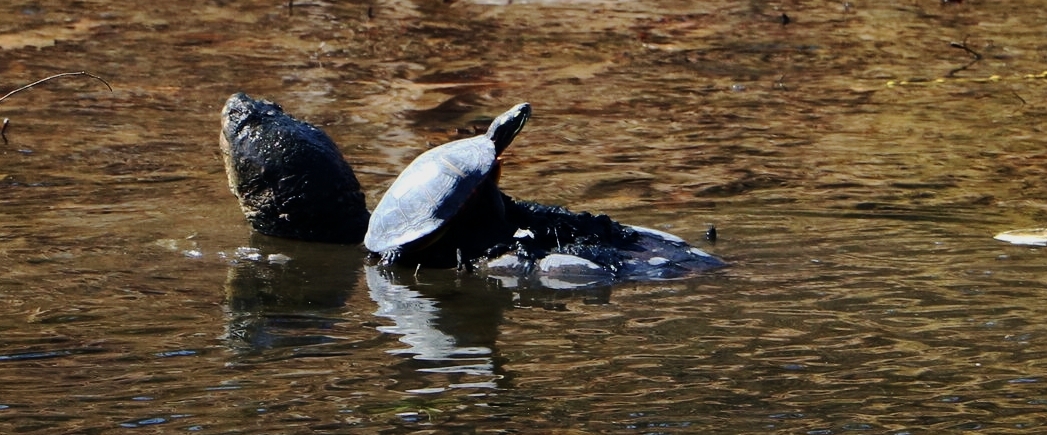Species #7: Eastern painted turtle (Chrysemys p. picta)
Species #8: Common snapping turtle (Chelydra serpentina)
Location: Binney Park (Old Greenwich, Connecticut)
Date: 29 March 2017
Post by Timothy J. Walsh
Binney Park (Old Greenwich, Connecticut). Photograph by Timothy J. Walsh.
Today, George L. Heinrich and I visited Binney Park (Old Greenwich, Connecticut). This 32 acre urban park was established in 1927. The former tidal marsh was slated for development as a subdivision when a local girl, Helen Binney, convinced her father to purchase the land and preserve it. The land was preserved, but not in its natural state. Instead, it was turned into a cultivated and highly manicured park for the enjoyment of local residents. Helen Binney (Kitchel) went on to become an environmental champion and a Connecticut State Representative; one of her many fights was against roadside billboards and the negative affects they had on the scenery.
Although this type of modified park is a mere shadow of its wild self, these are sometimes the only natural areas people have access to, especially children. Binney Park has a nice-sized population of turtles consisting of three species. I am always pleased, while visiting, to hear a child exclaim "look mommy, turtles!" with great excitement. While I sometimes hear inaccurate information stated about the turtles, I am just happy that people get to enjoy the wonder of these amazing animals in a wild situation.
An adult male red-eared slider (Trachemys scripta elegans) basks in the spring sun at Binney Park (Old Greenwich, Connecticut). Photograph by George L. Heinrich.
Like many urban parks containing water bodies, there is an abundance of non-native red-eared sliders (Trachemys scripta elegans). Featured heavily in the pet trade, this species is often released after outgrowing their novelty and tanks. They may cause damage to local turtle populations by competing for food, basking, and nesting resources. At this site, red-eared sliders outnumber native painted turtles nearly six to one. Binney Park is a great spot to view the large, prehistoric-looking common snapping turtle (Chelydra serpentina) and I have observed 13 individuals at one time. The snapping turtles are not shy and will often approach people on the shoreline. It is obvious that they occasionally receive 'snacks' from park visitors.
An eastern painted turtle (Chrysemys p. picta) was quite creative in selecting a basking spot at Binney Park (Old Greenwich, Connecticut), seen here on top of a common snapping turtle's (Chelydra serpentina) carapace! Photograph by George L. Heinrich.
Although it is technically spring, winter still has a good hold on the weather in the Northeast. It was 51° F and quite sunny. Most turtles in this region are just now emerging from hibernation and some are quite sluggish with swollen eyes. This is a difficult time for them to avoid predators and find food, but the most important thing for them right now is finding basking areas to absorb ample sunshine to kick-start their metabolism. In total, we were able to view four eastern painted turtles (Chrysemys p. picta), two common snapping turtles, and 23 red-eared sliders.
During a previous visit to Binney Park (Old Greenwich, Connecticut), a young boy was curious about an approaching snapping turtle (Chelydra serpentina). Photograph by Timothy J. Walsh.




